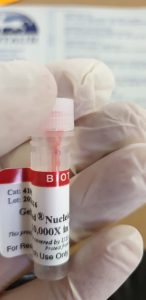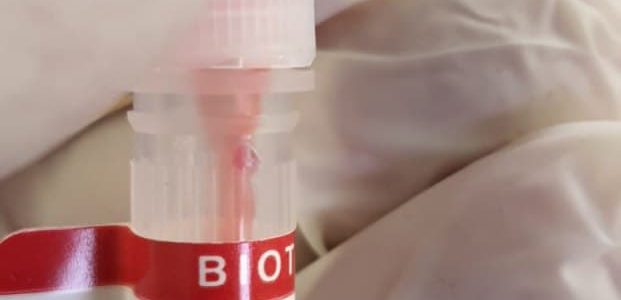For centuries, crop vegetation have represented the foundation of the day by day human food plan. Among them, cereals and legumes, accumulating oils, proteins, and carbohydrates of their seeds, distinctly dominate fashionable agriculture, thus play an important position in meals business and gas manufacturing. Therefore, seeds of crop vegetation are intensively studied by meals chemists, biologists, biochemists, and dietary physiologists. Accordingly, seed growth and germination in addition to age- and stress-related alterations in seed vigor, longevity, dietary worth, and security may be addressed by a broad panel of analytical, biochemical, and physiological strategies. Currently, practical genomics is one in every of the strongest instruments, giving direct entry to attribute metabolic adjustments accompanying plant growth, senescence, and response to biotic or abiotic stress.
Among particular person post-genomic methodological platforms, proteomics represents one in every of the best ones, giving entry to mobile metabolism at the stage of proteins. During the latest many years, a number of methodological advances had been launched in several branches of life science, though solely a few of them had been established in seed proteomics to this point. Therefore, right here we focus on important methodological approaches already employed in seed proteomics, in addition to these nonetheless ready for implementation on this area of plant analysis, with a particular emphasis on pattern preparation, information acquisition, processing, and post-processing. Thereby, the general aim of this overview is to carry new methodologies rising in several areas of proteomics analysis (medical, meals, ecological, microbial, and plant proteomics) to the broad society of seed biologists.
Comparative Multiplexed Interactomics of SARS-CoV-2 and Homologous Coronavirus Nonstructural Proteins Identifies Unique and Shared Host-Cell Dependencies
Human coronaviruses (hCoVs) have turn into a risk to world well being and society, as evident from the SARS outbreak in 2002 attributable to SARS-CoV-1 and the most up-to-date COVID-19 pandemic attributable to SARS-CoV-2. Despite a excessive sequence similarity between SARS-CoV-1 and -2, every pressure has a particular virulence. A greater understanding of the primary molecular mechanisms mediating adjustments in virulence is required. Here, we profile the virus-host protein-protein interactions of two hCoV nonstructural proteins (nsps) which are important for virus replication. We use tandem mass tag-multiplexed quantitative proteomics to sensitively examine and distinction the interactomes of nsp2 and nsp4 from three betacoronavirus strains: SARS-CoV-1, SARS-CoV-2, and hCoV-OC43-an endemic pressure related to the frequent chilly. This method allows the identification of each distinctive and shared host cell protein binding companions and the potential to additional examine the enrichment of frequent interactions throughout homologues from associated strains.
We determine frequent nsp2 interactors concerned in endoplasmic reticulum (ER) Ca2+ signaling and mitochondria biogenesis. We additionally determine nsp4 interactors distinctive to every pressure, resembling E3 ubiquitin ligase complexes for SARS-CoV-1 and ER homeostasis elements for SARS-CoV-2. Common nsp4 interactors embody N-linked glycosylation equipment, unfolded protein response related proteins, and antiviral innate immune signaling elements. Both nsp2 and nsp4 interactors are strongly enriched in proteins localized at mitochondria-associated ER membranes suggesting a brand new practical position for modulating host processes, resembling calcium homeostasis, at these organelle contact websites. Our outcomes make clear the position these hCoV proteins play in the an infection cycle, in addition to host elements which will mediate the divergent pathogenesis of OC43 from SARS strains. Our mass spectrometry workflow allows fast and sturdy comparisons of a number of bait proteins, which may be utilized to extra viral proteins. Furthermore, the recognized frequent interactions could current new targets for exploration by host-directed antiviral therapeutics

How to outwit nature: Omics perception into butanol tolerance
The vitality disaster, depletion of oil reserves, and world local weather adjustments are urgent issues of developed societies. One chance to counteract that’s microbial manufacturing of butanol, a promising new gas and various to many petrochemical reagents. However, the excessive butanol toxicity to all recognized microbial species is the important impediment to its industrial implementation. The current state of the artwork overview goals to expound the latest advances in fashionable omics approaches to resolving this insurmountable to date drawback of low butanol tolerance. Genomics, transcriptomics, and proteomics present that butanol tolerance is a posh phenomenon affecting a number of genes and their expression.
[Linking template=”default” type=”products” search=”Human Serum Albumin antibody” header=”1″ limit=”143″ start=”2″ showCatalogNumber=”true” showSize=”true” showSupplier=”true” showPrice=”true” showDescription=”true” showAdditionalInformation=”true” showImage=”true” showSchemaMarkup=”true” imageWidth=”” imageHeight=””]
Efflux pumps, stress and multidrug response, membrane transport, and redox-related genes are indicated as being most vital throughout butanol problem, as well as to fine-tuning of world regulators of transcription (Spo0A, GntR), which can additional enhance tolerance. Lipidomics exhibits that the alterations in membrane composition (saturated lipids and plasmalogen enhance) are very a lot species-specific and butanol-related. Glycomics discloses the pleiotropic impact of CcpA, the position of other sugar transport, and the manufacturing of exopolysaccharides as various routes to overcoming butanol stress. Unfortunately, the pressure that concurrently syntheses and tolerates butanol in concentrations that permit its commercialization has not but been found or produced. Omics perception will permit the purposeful enhance of butanol tolerance in pure and engineered producers and the efficient heterologous expression of artificial butanol pathways in strains hereditary butanol-resistant up to 3.2 – 4.9% (w/v). Future breakthrough may be achieved by an in depth research of the membrane proteome, of which 21% are proteins with unknown capabilities.
